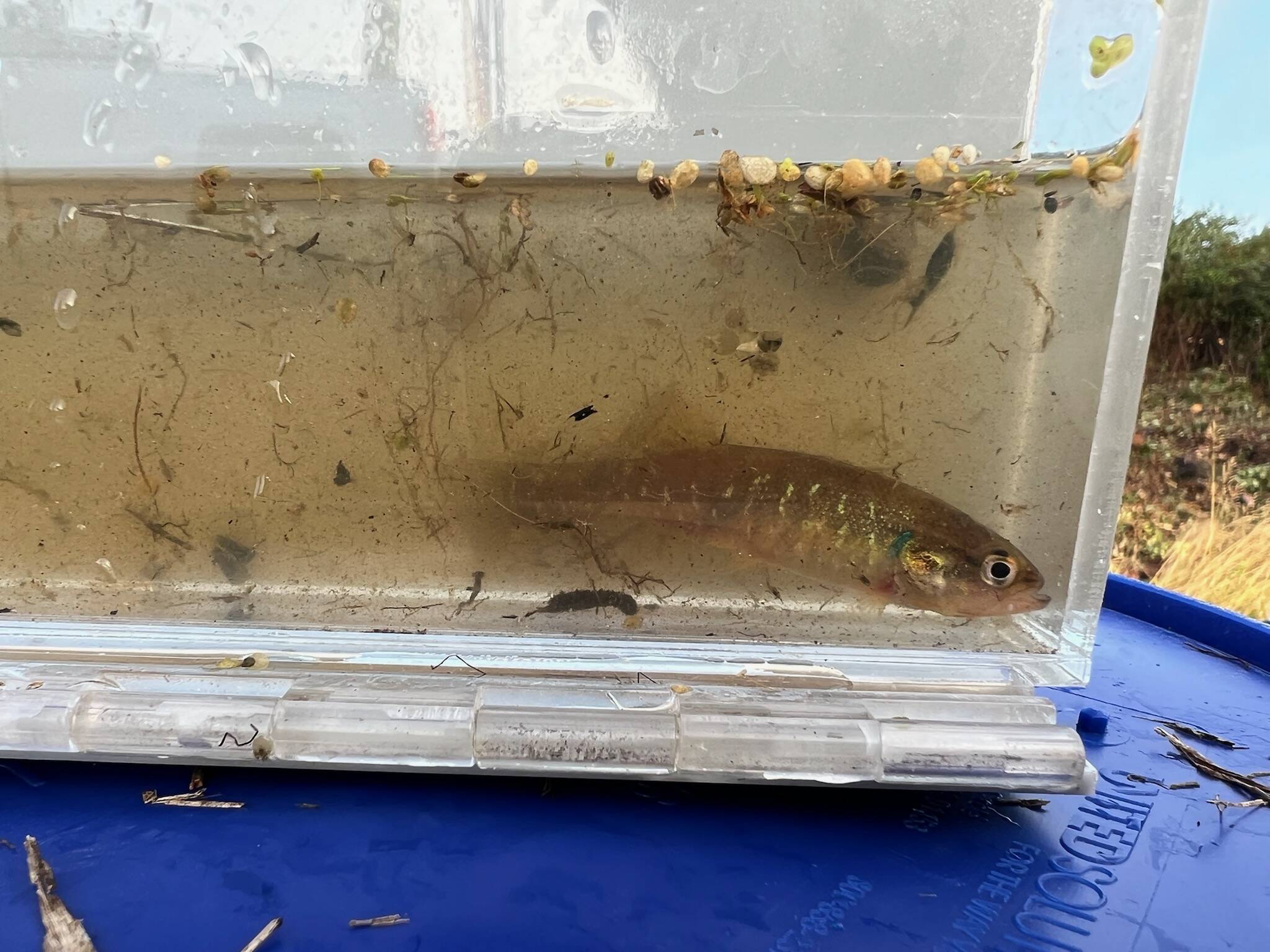Clayton Franke
The Daily World
For the first time in a generation, Oyehut Ditch can flow freely — at least in part.
Contractors recently removed a generation’s worth of debris from the ditch in Ocean Shores, including bicycles, shopping carts, dozens of tires and overgrown vegetation blocking the ditch and its culverts, which caused it to overflow after heavy rains last winter.
Before that, biologists carefully trapped and temporarily removed a tiny endangered fish that previously thwarted the city’s effort to clean the waterway.
Crews finished up late last month, completing the initial phase of a project aimed to minimize flooding and improve water quality of the city’s canal system.
The project has been a focus of Ocean Shores Mayor Jon Martin since he took his position in 2021. At a Sept. 26 city council meeting, he said the ditch hadn’t been maintained, and debris, garbage and sediments were affecting overall water quality in the city’s canals, including the Grand Canal, to which Oyehut Ditch contributes water.
Water level in the ditch dropped by one to two feet almost immediately following debris removal, according to City Administrator Scott Andersen, who guessed 20 years had passed since the debris was last removed from the ditch.
“You can actually look through a culvert and see daylight at the other side, which we were not able to do before,” Martin said at a Sept. 26 council meeting.
The city partnered with Rock Project Management, a contractor now involved with all but a few of the city’s public works projects. Crews used a backhoe — along with some elbow grease — to clear two of the ditch’s culverts, sites where debris tended to stack up and ultimately cause water to overflow.
Debris clearing started Sept. 12, Martin said, and stretched from Shoal Street to Arrow Lumber. The work required crews to wade through thick mud and vegetation.
“The only way you do this is the crews get down in the mud and remove stuff,” Martin said. “It is amazing what we pulled out of the culverts: bikes, tires, shopping carts, you name it.”
“With the amount of junk we pulled out of the culverts, it’s amazing we didn’t have more flooding,” Martin added.
Persistent flooding was a major reason the city chose to clear the ditch. Despite the immediate drop in water levels, winter rains haven’t tested the holding capacity of the bicycle-free waterway.
“I’ll be more excited to see, fingers crossed, what happens when it starts raining,” Martin said.
While debris removal required extra physical effort, paperwork — acquiring the necessary permits and navigating environmental hurdles that inevitably come with waterway-related projects — was perhaps the larger obstacle for the city en route to starting the work.
Andersen said the city worked with the Washington Department of Ecology, the Army Corps of Engineers and the Washington Department of Fish and Wildlife (WDFW) to secure necessary permits.
David Conlan, senior biologist with GeoEngineers, a consulting firm that helped with the project, said the city had to acquire a Hydraulic Project Approval permit from WDFW
In Oyehut Ditch, WDFW previously found the Olympic mudminnow, a sardine-sized fish native to Western Washington that’s listed as a “sensitive” species, according to the state.
The fish can’t be found anywhere else in the world.
The fish’s sensitivity prohibited the city from starting work without a plan ensuring the creature’s safety. Conlan said crews used nets to block fish from entering the work area and scooped them up with dip nets. After placing the fish in buckets, crews relocated the fish to a different area of the ditch.
Conlan said they captured hundreds of fish, although the Olympic mudminnow’s tendency to burrow into the wet muck — evading Conlan’s nets — meant capturing every last one was a near impossible task. He did say, however, that crews took extra precautions by performing extra sweeps of the area before work started.
The mudminnow remains a resident of the ditch, and so does one beaver, also a cause of flooding. In January, The Daily World reported the beaver was continually damming a Washington Department of Transportation (WSDOT) culvert, causing flooding near North Beach High School, and WSDOT would have to punch through the dams to ease that flooding.
“We still have that problem,” Andersen said.
While work on the first part of the project is finished, the city still plans to clear the northern section of the ditch. According to a report from Martin, the second phase will involve removing the “muck” from the ditch.
But action on the second project, according to Andersen, depends on whether or not the city council approves the 2023-2024 budget, which allocates $1.1 million towards the Oyehut Ditch project.
That funding comes from the American Rescue Plan Act (ARPA). According to the current budget, which the city council hasn’t yet undergone public comment, Ocean Shores received $1.8 million in total ARPA funding.
The council will hold a study session on the budget later this month and approve it before the end of the year.
Contact reporter Clayton Franke at 406-552-3917 or clayton.franke@thedailyworld.com.


